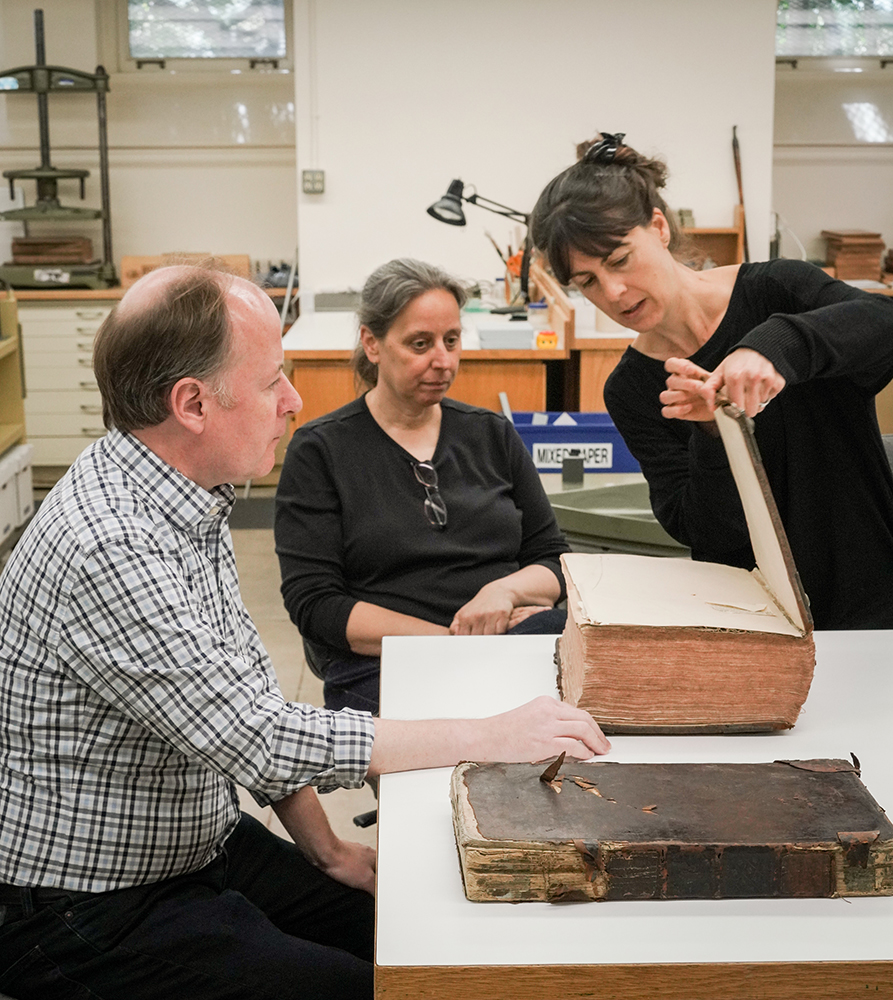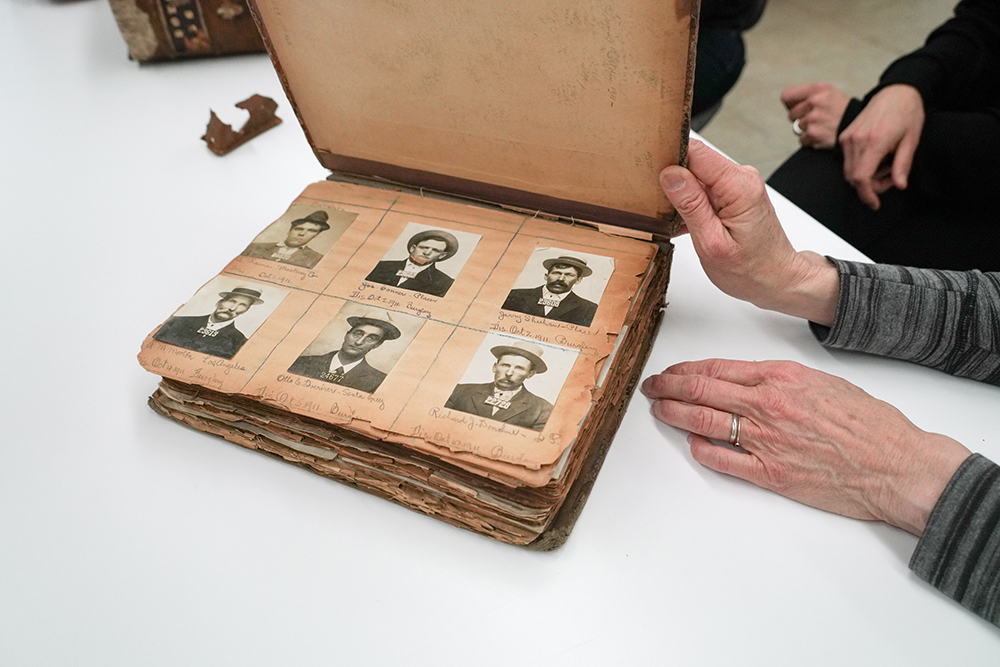
Days after the Notre-Dame cathedral saw its roof and spire fall into flames, questions about the monument’s reconstruction echoed around the world.
Should the roof’s frame, built in the 13th century from 1,300 oak trees, be re-created with the same materials, in the same style? Or should wood be swapped for steel, the less flammable, more abundant alternative?
The debates swirl on, all rooted in the riddle: How do we honor history while fixing it for the future?

In the UC Berkeley Library’s Preservation Department, conservators work through that puzzle for every item crossing their desks — all of the books, photographs, and documents worn out by time and use. The solution, in fact, lies with more questions. Each repair begins with an investigation into an object’s story, both past and yet to come.
The tricky part — the heart of the work — is balancing the two.
How will the object be used?
The core mission of the preservation team is to make sure the Library’s collections are stable enough to be used. But that standard varies greatly depending on just how much use the item is expected to endure. Those unknowns are guided by curators, whose insights help steer each restoration.
If the text of a volume is available online, for instance, then the physical copy may be less essential to readers, and its repair need not be as robust as others.
“If it’s something that is used a lot, we might want to do a stronger repair that may involve being slightly more invasive, in the interest of making it usable,” explained Hannah Tashjian, who leads the Library’s preservation team. “But if it’s something that’s not used very much, we’d want to preserve it as much as possible in the current state it is in.”
For a heavily used book, the point of greatest stress is the joint between the front cover and the spine. “That always tends to break first,” says senior conservator Martha Little, running her finger along the opening crease of a book.
Little points to a 1749 edition of the novel The History and Adventures of an Atom, whose cover has been torn from its body. A sturdy repair would involve cutting a portion of the leather to slide new material underneath. But the leather is so thin, Little says, the process would ruin it.
The text can be read online and is not requested often. So instead: A strip of handmade Japanese paper, very strong and thin, will be pasted to the inside, forming a hinge between the cover and the first page. (The adhesive is reversible, as are most of the team’s alterations.)
“It’s not a very strong repair, but it’s a less risky repair,” Tashjian says.
What parts should be saved?
For conservators, it’s important that their alterations not cover traces of history.
The goal isn’t to beautify the pieces, after all. Even smudges on a page can reveal what section of a book has been read the most, Little says.
“It’s not just the text that’s important to look at — it’s the ownership, the binding, the printing … who was reading it and why,” says David Faulds, curator of rare books and literary manuscripts at The Bancroft Library. “You never judge what is going to be of interest about a book.”
Old objects often contain several layers of history, represented by their patchwork of repairs across time. Those restorations may or may not be worth preserving — another conversation with curators.
Sitting on the conservators’ desk now is an 1813 tome in Hebrew from The Magnes Collection of Jewish Art and Life, whose cover hangs on by a thread. Many of the Library’s older Jewish works are in poor condition, Faulds notes, having been lugged around the world for centuries throughout the Jewish diaspora.
“They’ve been used so much, and there are so many home repairs,” Little says. “We wouldn’t want to remove any of them.”

How far do you go?
For a well-worn first edition of the King James Bible printed in 1611, one question is just how far to take the repair. The spine is bare skeleton in parts, with pieces of leather flying free. The linen threads binding the pages together are intact, though, as are the cover boards. It’s usable, Tashjian says, inspecting the work — especially if rested on a cradle. Rebinding seems unnecessary for now.
But it’s a popular treasure at Bancroft, Faulds says, and its stability in perpetuity is unclear.
“Do you want to wait for the failure, or do you be preemptive and deal with it right away?” he muses aloud.
Another item on the table, a photo book titled “Discharged Prisoners From Folsom & Quentin (1911-1917)” is even more fragile, with pages as brown and brittle as dried leaves. Just turning a page could be disastrous.
“(Patrons) pull out these materials in the reading room, and when they put it away you can see bits of crumbs of it on the table,” Faulds says.
One option is to place each leaf in a sleeve made of archival polyester, and bind those together anew. That does change the character, Tashjian says. But it’s the only way people can use it.
“This is our history,” Tashjian says. “And if we destroy it, and we don’t take care of it, then we can’t learn for the future.”
The ultimate solution, Faulds says, will be digitization, to ensure access to the collections will not impose further harm. Some items, however, will need to be altered slightly to withstand the digitization process itself — another trade-off in the mix.
Illustration by Aisha Hamilton